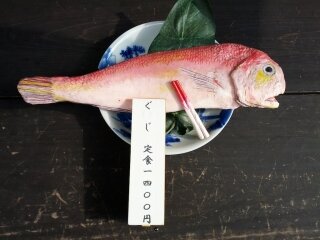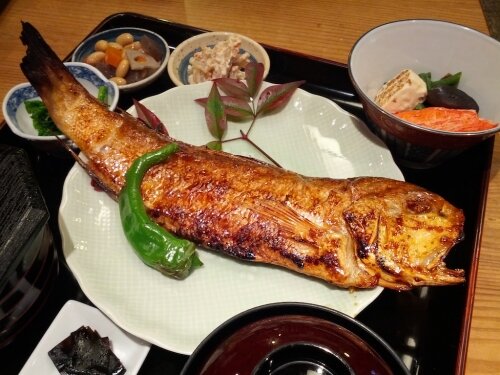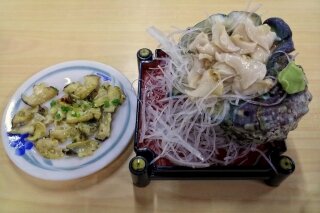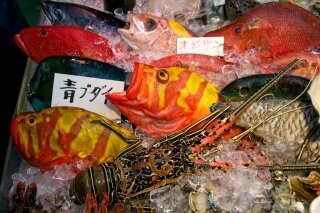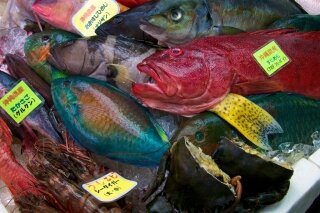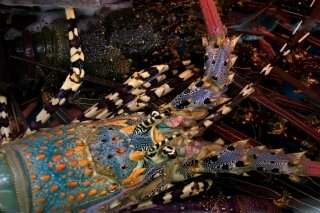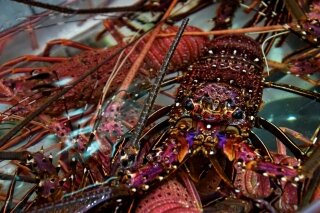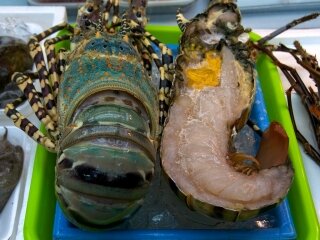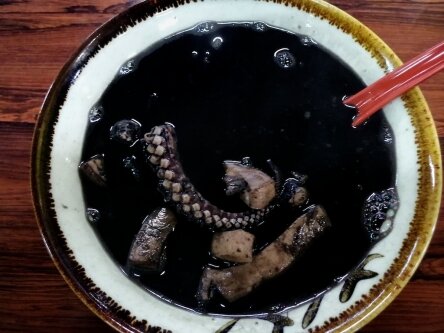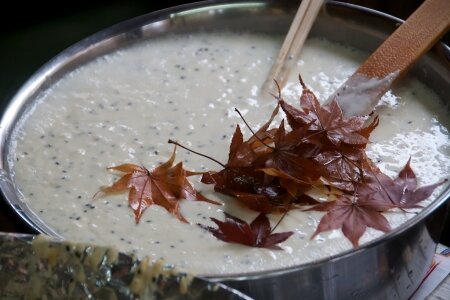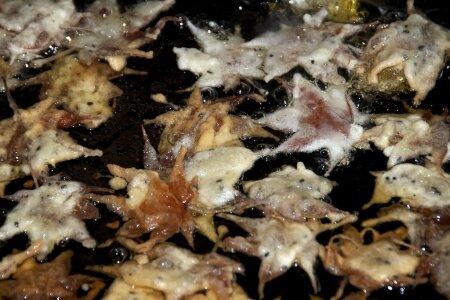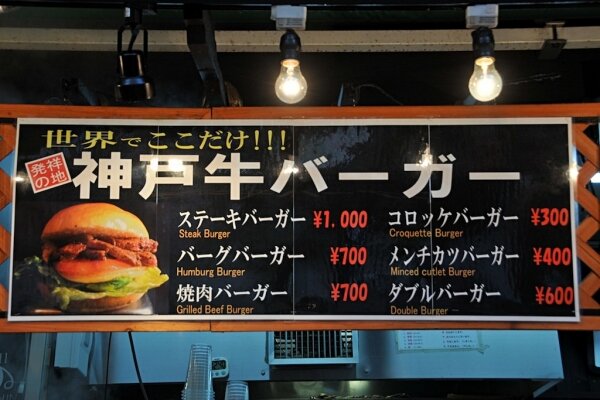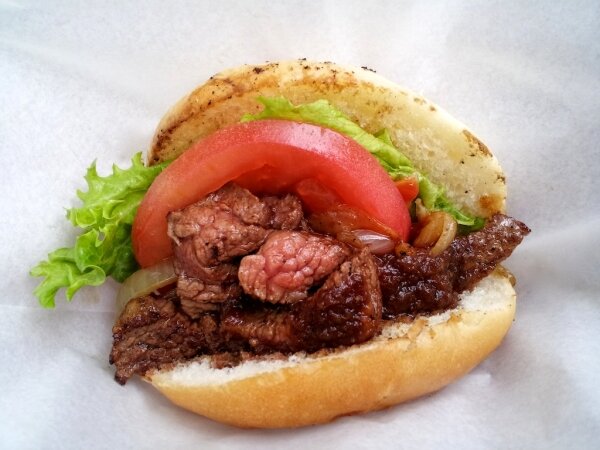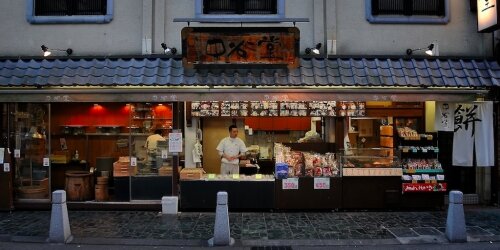Yakogai (夜光貝) is a giant sea snail for which Okinawa has always been renown for. They live a nocturnal life on coral reefs and grow up to 2 kg with the shell. At the Makishi market in Naha, you can try the taste of a fresh yakogai.
The main building hosts a seafood market on the ground floor and restaurants on the upper floor. You can choose the shell (still living) which you like, bargain over the price and ask the seller to call for a restaurant owner to take care of the animal.
The yakogai shells are not cheap, they cost around 2500 yen per kg, which means you have to prepare from 1500 to 4000 yen depending on the size.
The restaurant charges 300 yen for serving the shell, but you usually end up ordering side dishes too. In this case it was prepared half as a raw sashimi and the other half was stir-fried (itame).
Finally the taste. Yakogai sashimi has a structure and taste similar to tsubu-kai which means it is crunchier than other types of snails in Japan. The stir-fried part tasted particularly good.
Definitely worth a try if you are into seafood and visit Naha.
